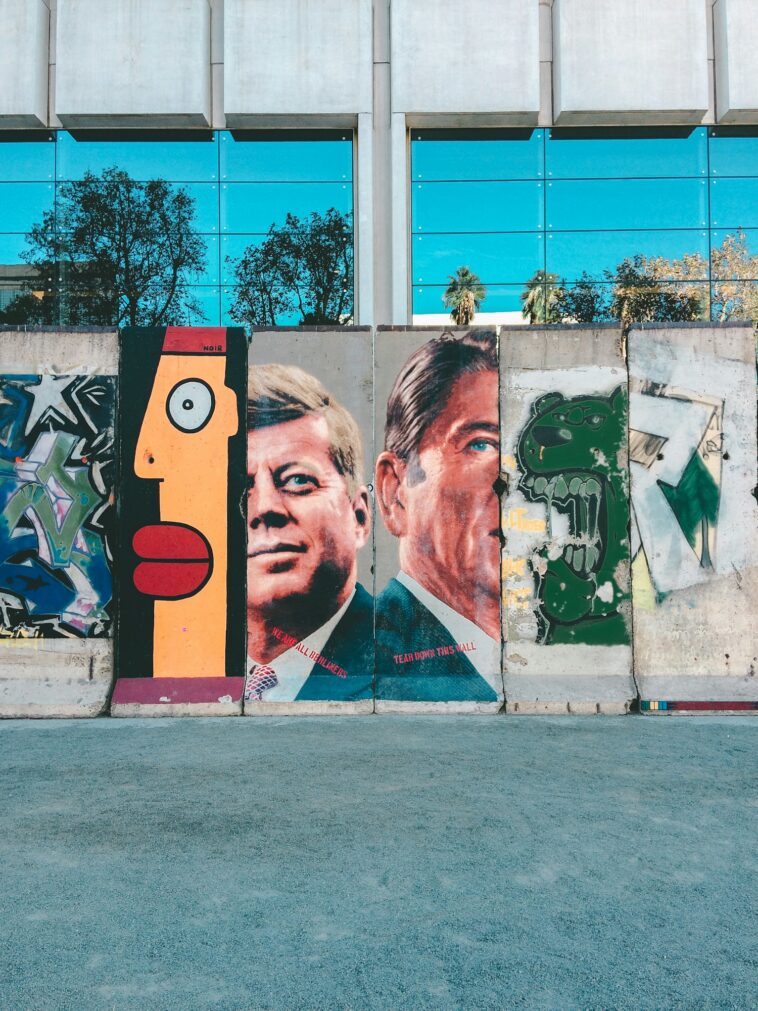- The Berlin Wall, erected in 1961, divided West Berlin from East Berlin and East Germany.
- It was a symbol of the Cold War, representing physical and ideological division.
- The Wall’s fall in 1989 symbolized the end of the Cold War and led to German reunification.
Introduction
The Berlin Wall, a symbol of the Cold War, stood as a physical barrier dividing not just a city but also a world ideologically split between democracy and communism. Its construction in 1961 by the German Democratic Republic (GDR) and subsequent fall in 1989 marked pivotal moments in modern history.
The Wall’s Construction and Purpose
- Start Date: 13 August 1961
- Demolished: 9 November 1989 – 1994
- Primary Reason: Prevent East German citizens from fleeing to the West.
- Soviet Bloc Propaganda: Portrayed as a protection against fascism.
- Western Perception: Known as the “Wall of Shame”, symbolizing oppression.
Life Along the Wall
- Dimensions: Encircled West Berlin with varying lengths and barriers.
- Restrictions: Heavily guarded, with fortifications preventing escape.
- Impact on Citizens: Separated families, restricted freedom, and led to numerous escape attempts, often fatal.
Political Context and Global Impact
- Eastern Bloc Influence: The Wall epitomized the division of Europe post-World War II.
- Defections and Escape Attempts: Over 5,000 successful escapes; estimated death toll between 136 to more than 200.
- Political Reactions: Criticized globally, it became a symbol of communist tyranny.
The Fall of the Wall
- Triggered By: Revolutions in Eastern Bloc countries and policy changes in East Germany.
- Notable Dates: Opened on 9 November 1989, leading to jubilant scenes as East and West Germans united.
- End Result: Paved the way for German reunification on 3 October 1990.
Aftermath and Legacy
- Cultural Impact: The Wall’s remnants serve as a historical reminder.
- Economic and Social Reunification: Highlighted the differences between East and West Germany, which persist in some forms even today.
- Global Significance: Symbolizes the triumph of freedom over oppression.
Memorialization
- Monuments and Museums: Parts of the Wall are preserved and displayed worldwide.
- Educational Purpose: Acts as a reminder of the repressive nature of the GDR regime and the resilience of the human spirit.
Conclusion
The Berlin Wall remains a powerful symbol of the 20th century’s ideological struggles. Its construction and subsequent fall represent both the division and eventual unification not just of a city or a country, but of a world once split by the Cold War’s geopolitical tensions. As we reflect on its history, the Wall continues to remind us of the value of freedom and the human cost of political division.





